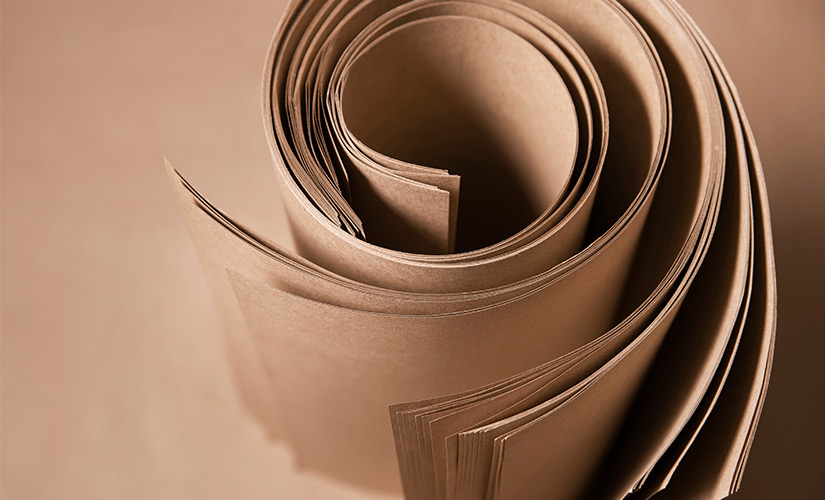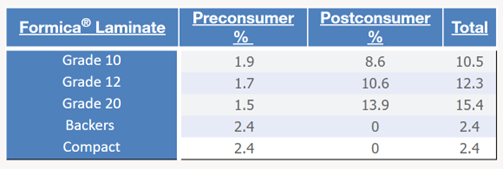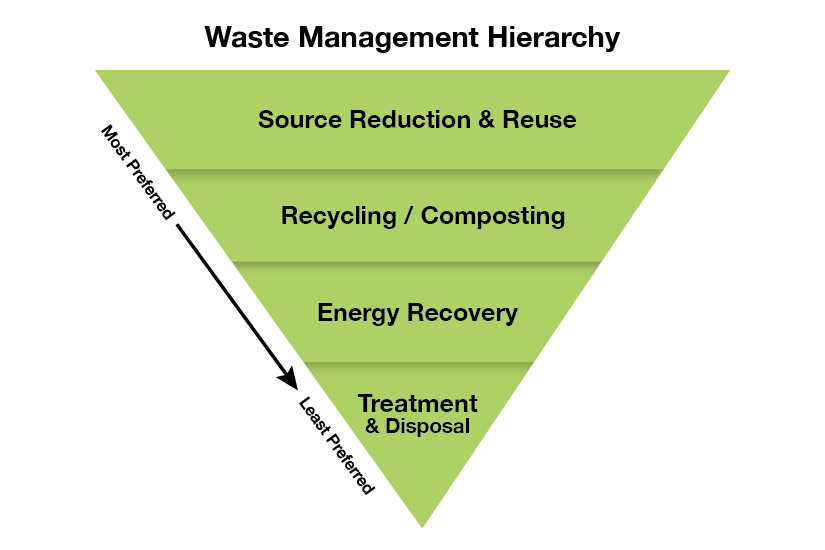Recycled Paper Content: More Than Just a Percentage
The post-consumer recycled content in Formica® Laminate is part of a holistic approach to creating high-quality products with sustainable business practices.

Recycled Content: A Key Ingredient in Formica® Laminate
At Formica Group, we’re often asked about the percentage of recycled paper content in our products. This is because Formica® Laminate is made from compressed layers of kraft paper coated in phenolic resin. We’re proud to create our signature high pressure laminate (HPL) with post-consumer recycled content. In fact, it’s one of many facets of our company-wide dedication to sustainable business practices.
But manufacturing sustainable products means much more than just looking at the percentage of recycled content. Just because something contains recycled paper fibers doesn’t mean it’s sustainable — or that it’s a high-quality item. Capturing a simple percentage of recycled content can be misleading if the quality of that content is poor or the process used to incorporate it isn’t environmentally friendly.
A Look at Our Percentage of Recycled Content
The recycled content in Formica® Laminate is determined in accordance with ISO Standard 14021. Formica® Laminate grades indicate the thickness of the product. The application will dictate the most appropriate option.

At a High Level: How Recycled Paper Is Made
It’s easy to idealize and oversimplify the paper recycling process because it’s been around for decades. However, it’s a complex effort that requires energy and chemicals. Post-consumer paper must be sorted and de-inked before the pulp is bleached and restored to a usable product.
Each time paper fibers are recycled using this method, they become weaker, which affects the quality of the end products they help create. The American Forest & Paper Association says recycled paper fibers can be reused five to seven times. This means companies need to pay close attention to the type of recycled paper pulp they source.
Maintaining the Quality of Formica® Laminate in a Sustainable Way
Introducing sustainable manufacturing processes invariably requires companies to evaluate the impact on product quality. For Formica Group, maintaining product quality and durability is key so our customers can trust that their Formica® Laminate will deliver on expectations.
When we evaluate new sustainability initiatives for product manufacturing, we first complete a life-cycle assessment (LCA). This process evaluates the details of the entire environmental footprint of the product from raw material extraction to the finished Formica® Laminate leaving the factory. In this case, an LCA helps us assess the appropriate amount of recycled content that can be used in the final product while maintaining our quality standards.
What About Sourcing Sustainable Virgin Paper Content?
In addition to being manufactured with post-consumer recycled content, Formica® Laminate holds full FSC® certification for the virgin paper used. This designation certifies that the wood the paper is made from comes from a controlled source that doesn’t engage in unregulated deforestation.
Guidance from the EPA’s Waste Management Hierarchy
The EPA’s Waste Management Hierarchy prioritizes source reduction and reuse of products whenever possible, with alternatives listed in descending order of preference. It’s a helpful model for thinking about the many ways we can adjust our everyday activities to make a difference. Formica Group incorporates these recommendations by reducing the sources of waste during manufacturing wherever possible and by designing beautiful, long-lasting surfaces.

A Holistic Approach to Sustainability
As we can see, recycled content is part of a larger sustainability picture. In light of the Waste Management Hierarchy, we can look at sustainability from multiple angles. Below are some of Formica Group’s approaches to sustainable business practices. Manufacturing with renewable energy: Formica Group manufacturing plants in Evendale, Ohio, and St-Jean-sur-Richelieu, Quebec, Canada rely on
• Manufacturing with renewable energy: Formica Group manufacturing plants in Evendale, Ohio, and St-Jean-sur-Richelieu, Quebec, Canada rely on 100% renewable electricity to power operations.
• Waste prevention: The extensive Formica® Laminate Collection features many highly durable, timeless patterns that can future-proof design with beautiful, long-lasting surfaces.
• Post-use disposal: Formica Group’s new program with TerraCycle focuses on ways to recycle sample materials by using them to create other products.
Formica Group is continually looking for new opportunities to update business and manufacturing processes to reduce the environmental impact while maintaining high standards of product quality.



